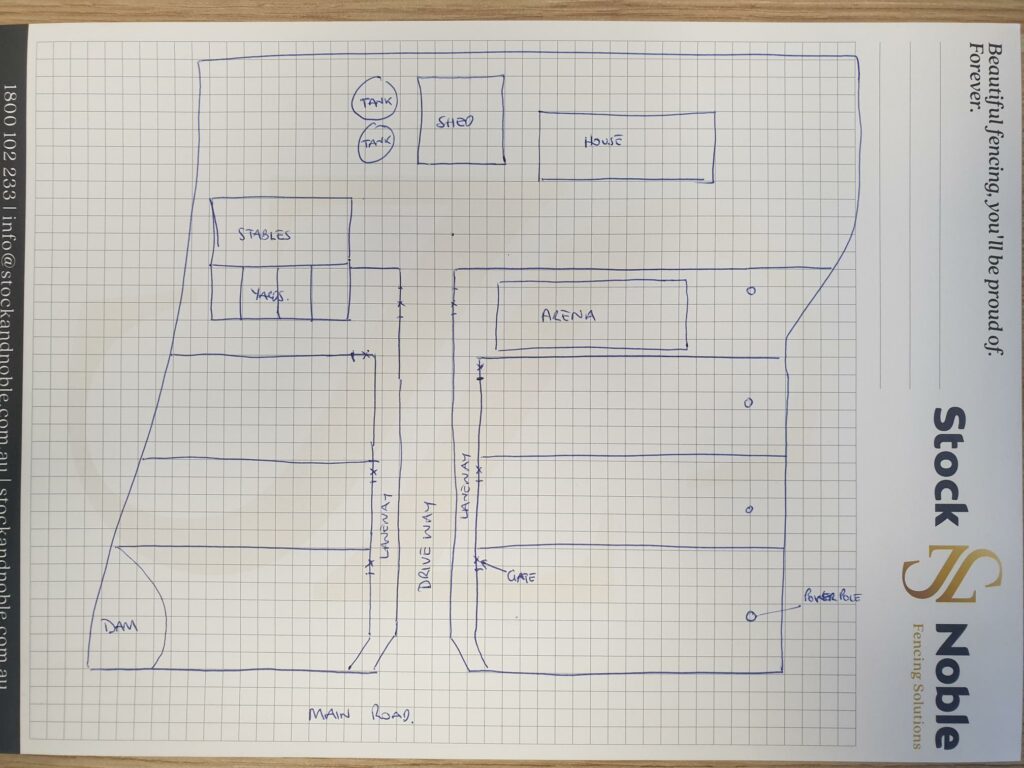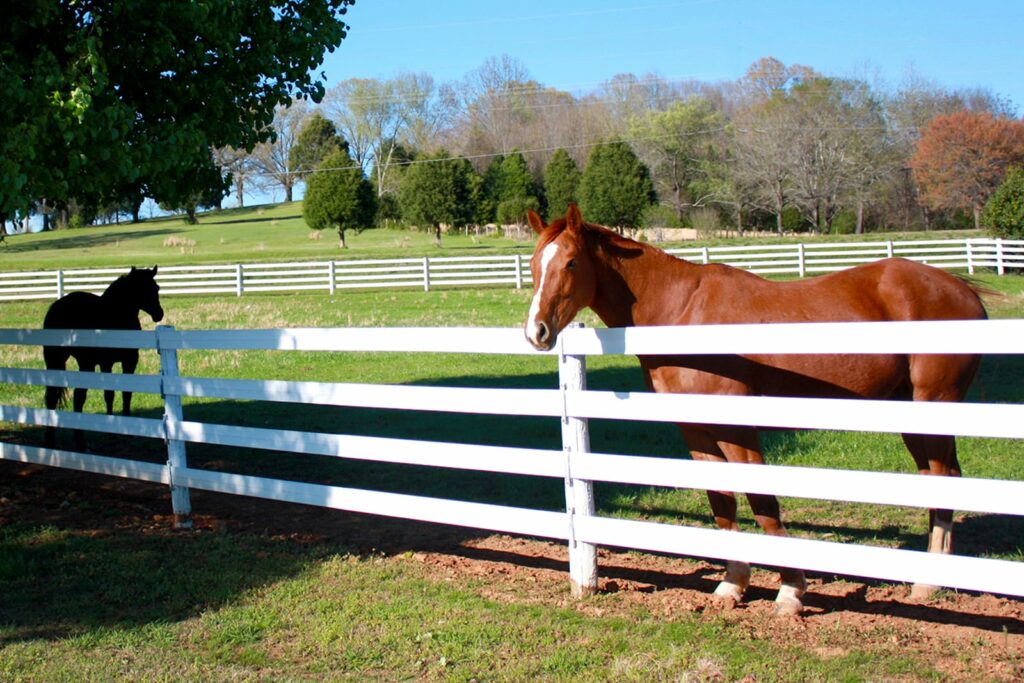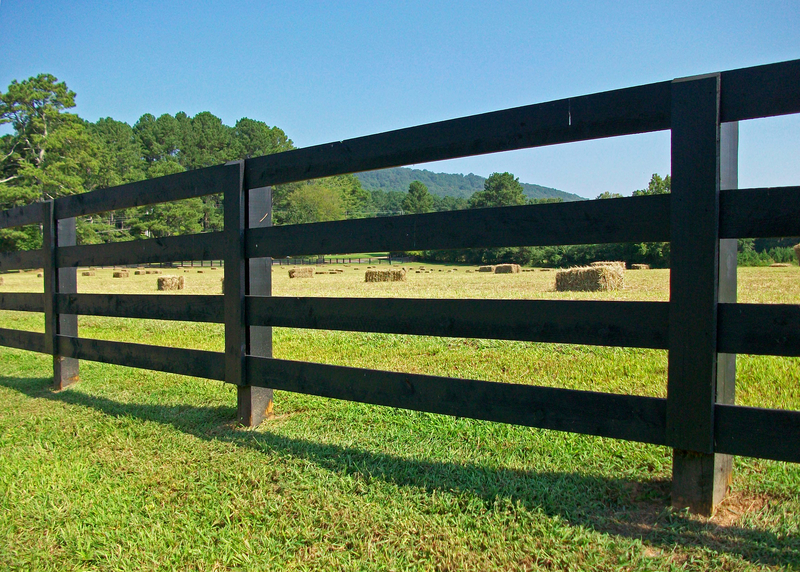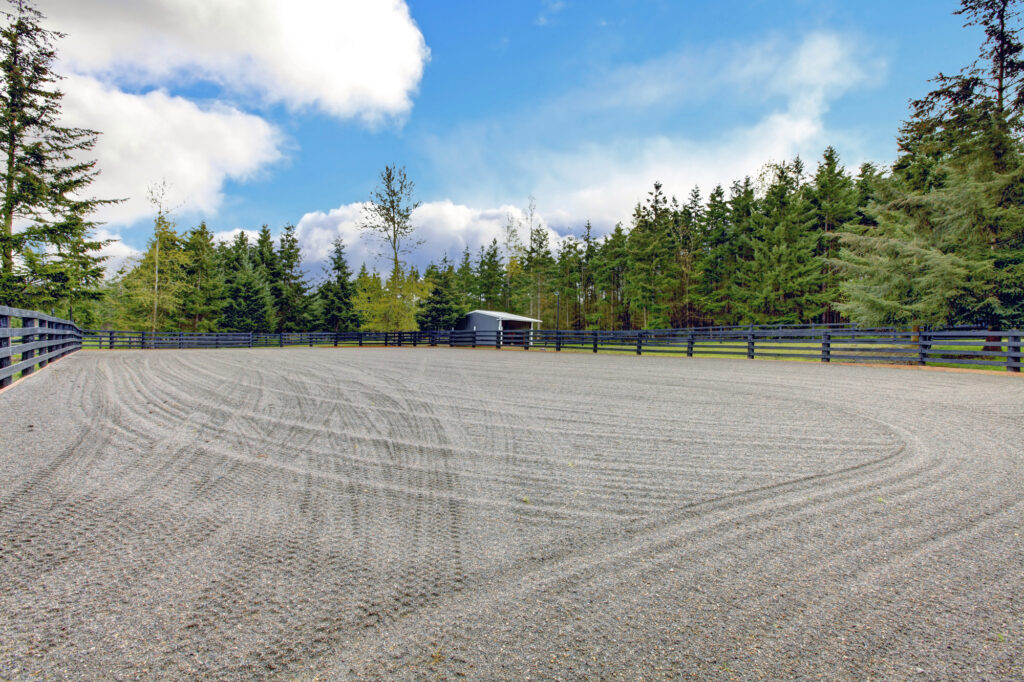Stock & Noble

- BY Tripti Kakkar
Horse fencing is one of the most critical elements at a property that can elevate the aesthetics, increase safety and allow for better management of the horses. It’s a major capital investment that also impacts the overall value of your horse property.
If a property’s fence is badly planned, poorly constructed, unsafe, or unmaintained, its value will be diminished. You will be bound to a fencing layout that might be impractical and tough to manage or maintain. Thus, creating more work on weekends to fix it rather than enjoy your beautiful equine property.
Horse fencing should be thoughtfully chosen, and the layout should be carefully planned. At Stock & Noble, we provide the finest fencing solutions to high-end properties across Australia and New Zealand. We have years of experience in helping our clients design their fencing layout and create a stunning and safe equine property just the way they imagined.
Based on our knowledge and learnings from the success of our clients, we will share 7 steps to help you plan your horse fencing layout. It will guide you in saving your time, effort, money and peace of mind.
In this article, you will learn the best way to plan your fencing layout from start to finish.
- Visualise your horse fencing layout
- Plan your entrance, driveway, gates and laneways
- Decide different features of the property
- Take note of the terrain
- Put your horse fencing layout on paper
- Choose your horse fencing
- Connect with your horse fencing advisor
In the end, you will be able to achieve the right fencing layout, avoid the most common mistakes and get a mix of the perfect look and functionality.
Step 1: Visualise your horse fencing layout
Every property is different and has different needs.
If you’ve bought a new property and are planning to start the fencing project, we would advise you to first move in and understand what works for you and your animals. It would be a good idea to live on the property for some time and then start visualising and planning for your horse fencing. However, you may already have an idea what works best for you.
If you want to give your existing property a makeover, try and lay a clear objective of what you’d like the new fencing to achieve for you, your animals and the problems it needs to solve. It’s your property, so your fencing layout should reflect your vision and your ideas.
Step 2: Plan your entrance, driveway, gates and laneways
Once you’ve visualised your horse fencing layout, the next step is to consider the four big factors.
1. Choose what kind of entrance you want and how many.
The majority of properties have at least one entrance. Placement and the amount of space your entrance needs should be carefully considered.
If you’d like two entrances, one for your home and another for access to stables, sometimes it’s just easier to work with what is already there. This is due to local government requirements around roads and access.
2. Determine how you want your driveway to be.
Think about the kind of look you want for your driveway. Whether you want to create a straight one or a long driveway with a couple of curves.
3. Decide the number and position of fencing gates.
Usually, clients tend to spend a lot of time choosing the right horse fencing, but not too much thought goes into the planning of gates. Trust us, picking the perfect fence gates for your horse fencing can make a huge difference to the overall aesthetics and management of your property.
We recommend giving the position and the type of your gate adequate thought while planning your fencing layout. Ideally, Fencing gates should be easy to operate with only one hand so the other hand is free.
4. Plan your laneways
Typically, most of the signature properties have well-thought-out laneways that interconnect paddocks, stables and other key functional areas on the property. There are two different types of lanes: grassed or gravelled, based on the type and volume of traffic they receive.
Ensure that they are wide enough to accommodate mowing equipment and vehicles. Cars, light trucks and tractors will need approximately 2.5-metre width, while farm equipment is typically bigger and needs 3.6- to 4.9-metre-wide lanes to easily manoeuvre.
Step 3: Decide different features of the property
While planning your fencing layout, you need to consider different activities that you’d want to include on your property. Every function might need a different kind of fencing and will also have an impact on the overall aesthetics, chore efficiency, management and finances.
In our experience, the main areas to consider for your horse fencing layout are:
- Stables
- Round Yards
- Day Yards
- Arenas
- Paddocks
- Home
- Other outbuildings
Decide how many of these areas you’d like to include in your fencing layout and where. Also, as far as choosing horse fencing is concerned you can explore one fencing for all the areas or consider the option of multiple fencing depending on the visual impact and functionality.
We understand it could get overwhelming to make these decisions and getting experts’ advice can help bring clarity and ease the stress.
Step 4: Take note of the terrain
Scan your property and note down the terrain, whether it’s hilly, steep or rocky. Is there a gradient or undulation?
List down any other factors that are of note that impact the overall terrain of the property, like streams, a large grouping of trees, powerlines and more.
This will have an impact on the kind of horse fencing you choose eventually and also on the cost of installation. Remember to mention it to your Fencing Supplier and the Fencing Contractor.
Step 5: Put your fencing layout on paper
This is probably the most crucial step in turning your fencing dream into a reality.
However, we have noticed this is the point where most property owners feel hesitant and prefer leaving the sketch to the experts. It’s your property, your vision and you’re the best person to make the first move.
Take a piece of paper, and a pen and jot down your thoughts. It’s that simple. You don’t have to be exact, accurate or perfect. Even an extremely basic and rough sketch can help your Fencing Supplier understand your vision and create a huge difference in executing the eventual fencing plan.
As you begin to draw out your fencing plan,
- Mark your boundaries, gates, and other negotiables.
- Start filling in the details of the different features you plan to include like stables, paddocks, yards, arenas and your home.
- Decide which areas are important for you to the fence first.
Rough sketch example:

Once your rough sketch is ready, you can use an interactive tool to create a digital version of the fencing layout and also get an estimate of the cost based on the area covered.
Step 6: Choose your horse fencing
If you are looking for a perfect fence, the truth is it doesn’t exist. What exists is a fence that’s perfect for your property. So, start by thinking of three absolute non-negotiable features you need from your fence.
You can choose from:
- Great looks
- Low maintenance
- Cost-effective
- Won’t grow mould
- Post and rail
- Mesh
- Long life
- Safety
- Termite Proof
- Current availability
- Durability
- Multiple fencing types that work together
- Environmentally Friendly
- Colour
- Any other thing that matters to you
- Something unique
Also, learning about other important factors can help you find the perfect horse fencing for your property.
Step 7: Connect with your fencing advisor
Finally, when you are done with your rough sketch reach out to a fencing expert. It could be your Fencing Supplier or your Fencing Contractor.
As you share your sketch and discuss your requirements, they can help you detail your fencing plan with more accuracy.
Request a detailed fencing layout
To plan effectively, it is essential to draw a scaled layout showing gates, fence lines, places where fences cross streams, irregular paths along streams or obstacles, routes for horses and handlers, routes for water and supplies, routes for vehicles, and routes for mowing equipment. It is important to relay all these features of your property onto your sketch.
At Stock & Noble, we can help create CAD designs of your final fencing layout. It can be based on your rough sketch and will list every feature in detail to eventually create a beautiful equine property.
Request a site visit
Horse fencing is a huge and long-term investment. To ensure that your planning and fencing layout is done perfectly, check with your Fencing Supplier or Fencing Contractor to visit your property.
They can take a look at the land, topography, and functions you want to incorporate and make the best suggestions to help you realise your vision. Here’s how you can find the best Fencing Contractor for your project.
Ready to start planning your horse fencing layout?
You want to begin your horse fencing project and the first step is to plan. Now you have a checklist ready to refer to and all you need to do is make sure every step is ticked off. To help you create a safe and beautiful equine property.
Each step will help you amplify the fencing plan and bring clarity to your concept so the final installation can be carried out smoothly. Once the fencing plan is ready and you have chosen your horse fencing, the next stage is to finalise your Fencing Supplier.
Having the right knowledge, getting the right advice, and doing great research will make your fencing journey fun and ensure you get the horse property you’ve always wanted.
In case you have any further questions or need some advice to determine if your choice is right for your property, we’d be glad to assist you. Fencing options are plentiful at our Stock & Noble, and our fencing advisors will provide a personalised consultation according to your vision and budget. Trust us, to help you build a beautiful equine property.





